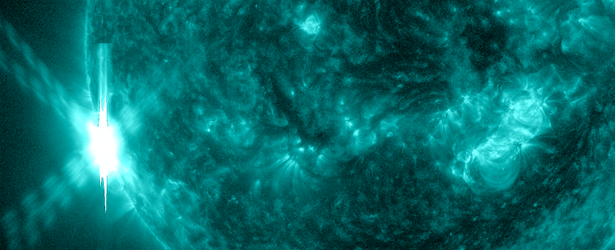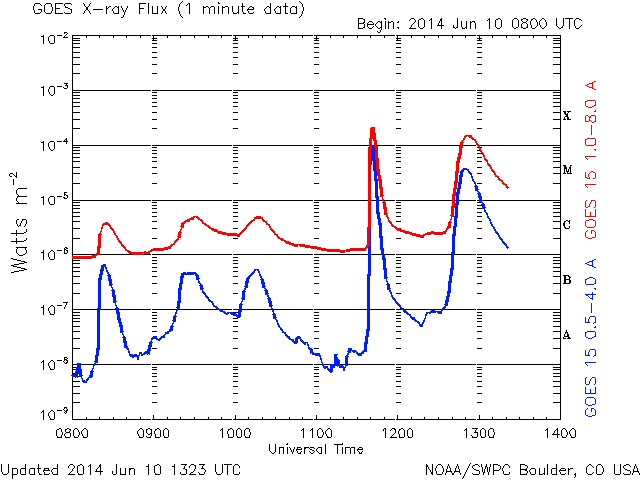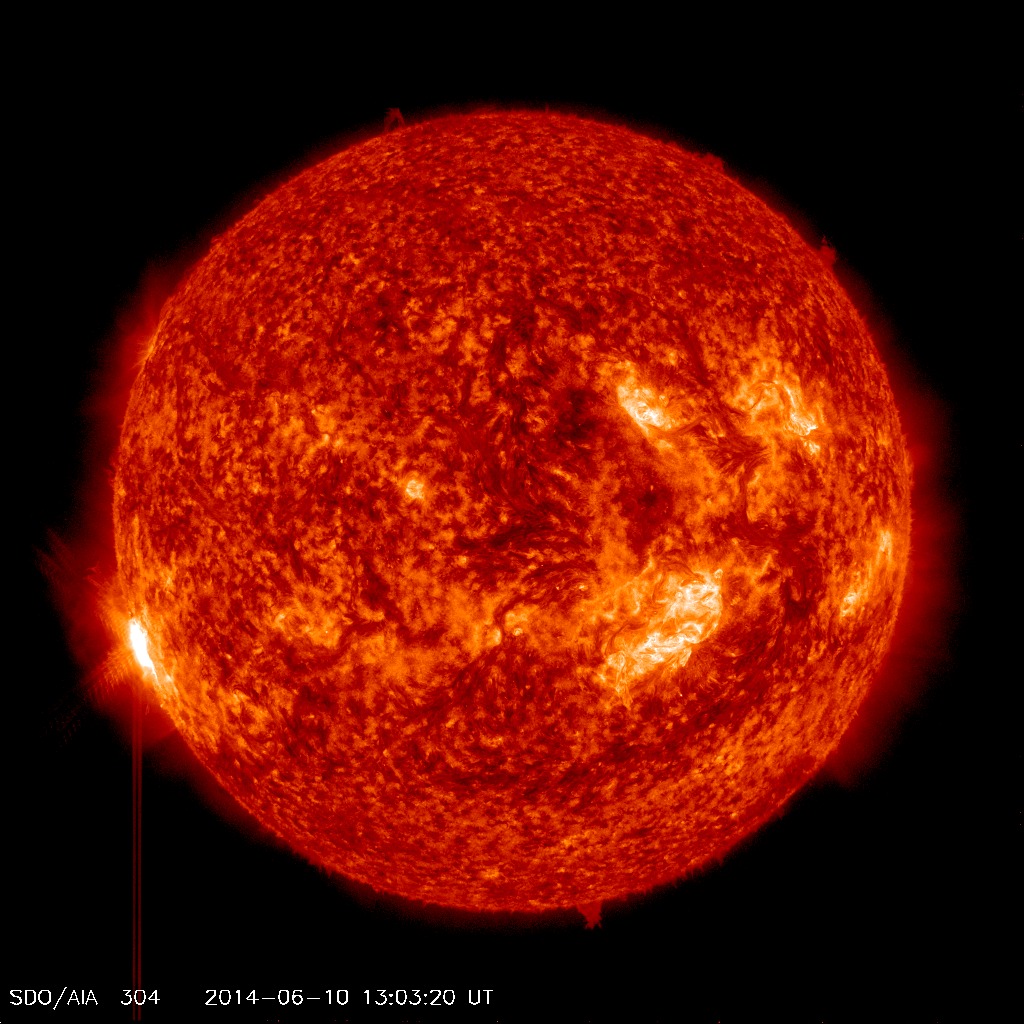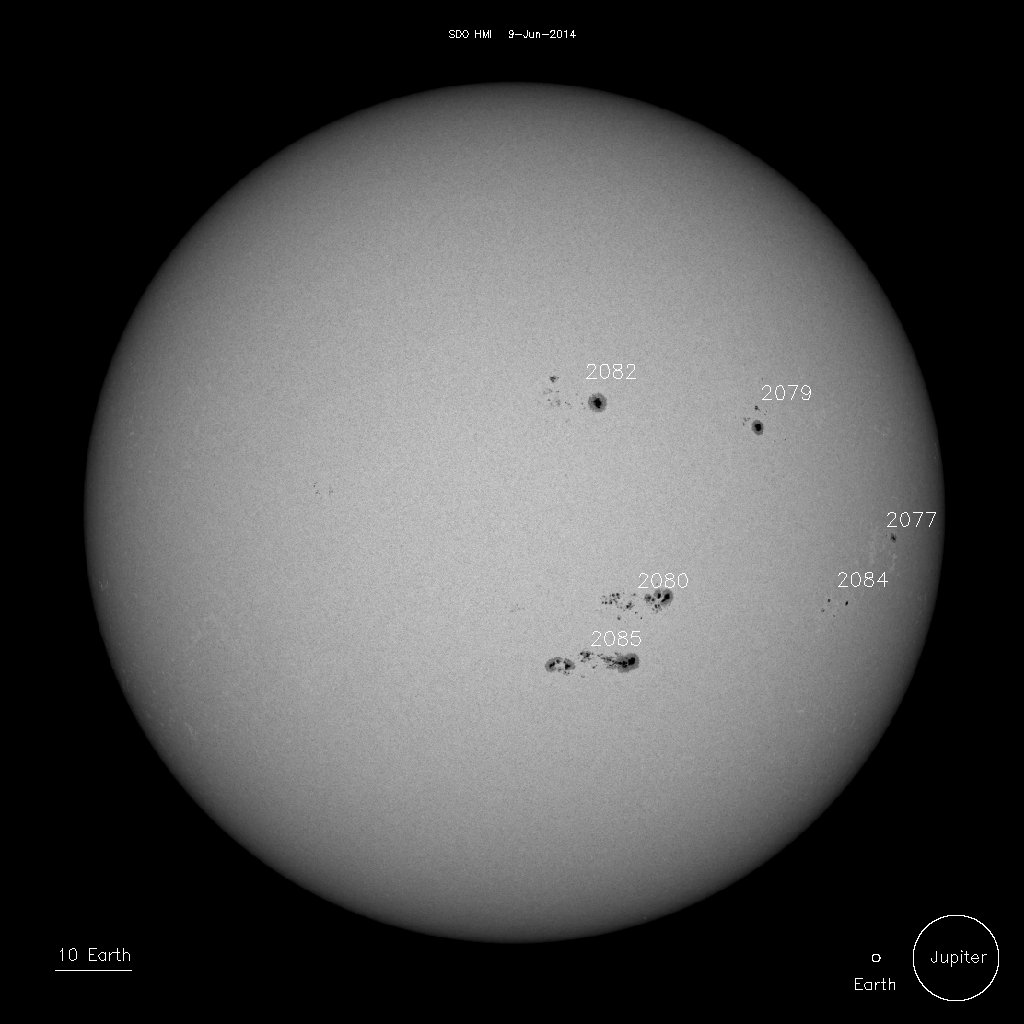Second major solar flare of the day – X1.5 from southeastern limb

Two X-class solar flares erupted in just over one hour from Sun's southeastern limb today. The first one peaked at 11:42 UTC as an impulsive X2.2 – you can read more about it here. The second X-class event of the day started at 12:36, peaked at 12:52 as X1.5 and ended at 13:03 UTC.
Surprising as it is, this is now the sixth X-class solar flare of 2014.
While the X2.2 was impulsive in nature and it did not generate a big Coronal Mass Ejection (CME), the second one had a Type IV Radio Emission which usually occur in association with major eruptions on the Sun and are typically associated with strong CMEs and solar radiation storms. Additionally, a 10cm Radio Burst lasting 18 minutes, with peak flux of 530 sfu, was associated with that event.
Both these flares were centered around new AR 2087 (old region 2065) located on the eastern limb and their CMEs will most likely be directed away from our planet.


***
Space Weather Message Code: ALTTP4
Serial Number: 461
Issue Time: 2014 Jun 10 1309 UTC
ALERT: Type IV Radio Emission
Begin Time: 2014 Jun 10 1230 UTC
Description: Type IV emissions occur in association with major eruptions on the sun and are typically associated with strong coronal mass ejections and solar radiation storms.
***
Space Weather Message Code: SUM10R
Serial Number: 620
Issue Time: 2014 Jun 10 1312 UTC
SUMMARY: 10cm Radio Burst
Begin Time: 2014 Jun 10 1241 UTC
Maximum Time: 2014 Jun 10 1247 UTC
End Time: 2014 Jun 10 1259 UTC
Duration: 18 minutes
Peak Flux: 530 sfu
Latest Penticton Noon Flux: 161 sfu
Description: A 10cm radio burst indicates that the electromagnetic burst associated with a solar flare at the 10cm wavelength was double or greater than the initial 10cm radio background. This can be indicative of significant radio noise in association with a solar flare. This noise is generally short-lived but can cause interference for sensitive receivers including radar, GPS, and satellite communications.
***
Space Weather Message Code: SUMX01
Serial Number: 101
Issue Time: 2014 Jun 10 1327 UTC
SUMMARY: X-ray Event exceeded X1
Begin Time: 2014 Jun 10 1236 UTC
Maximum Time: 2014 Jun 10 1252 UTC
End Time: 2014 Jun 10 1303 UTC
X-ray Class: X1.5
Optical Class: 1f
Location: S18E79
NOAA Scale: R3 – Strong
Potential Impacts: Area of impact consists of large portions of the sunlit side of Earth, strongest at the sub-solar point. Radio – Wide area blackout of HF (high frequency) radio communication for about an hour.
***
Sunspots
There are currently 7 numbered sunspot regions on the Earth side of the Sun. Strong solar activity today was expected from 'beta-gamma-delta' regions 2080 and 2085 which are almost perfectly positioned for Earth directed CMEs. With old region 2065 now returning and erupting with X-class flares chances for more strong eruptions have significantly increased.

Sunspots on June 10, 2014. Image credit: NASA SDO HMI
2077 – Alpha
2079 – Beta
2080 – Beta-Gamma-Delta
2082 – Beta
2084 – Beta
2085 – Beta-Gamma-Delta
2086 – Beta
Rotating in: 2087 – Beta (old AR 2065) – source of two X-class solar flares on June 10, 2014
Featured image: NASA SDO AIA 131

Commenting rules and guidelines
We value the thoughts and opinions of our readers and welcome healthy discussions on our website. In order to maintain a respectful and positive community, we ask that all commenters follow these rules.